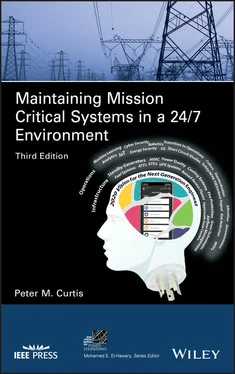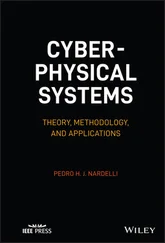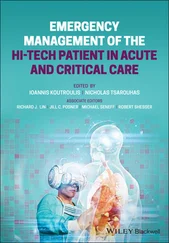To ensure the safety and security of tomorrow’s digitized critical infrastructures, enterprises must adopt a systematic knowledge transfer program for high value “re‐use” by ensuring that:
1 The next‐generation of engineers enter the mission‐critical industry with appropriate education and training – and continue to achieve industry certification and refreshed training and also gain aptitude in new technologies such as Machine Learning, IoT, AI, VR, robotics, etc.
2 Industry and corporate knowledge from the current population of engineers is captured in an organized, systematic way that can be integrated into future devices to enable safe and secure facilities process management.
3 An established corporate culture of standardized documents and technology tools where the operational health index is shared and known by all the stakeholders every day. This process allows the enterprise to be proactive active at all times, reducing risk and improving safety.
Blending the best in class engineering solutions, technology, education, and training in an all‐encompassing Facilities Process Management (FPM) platform will help mitigate risks and secure the safety of our future, AI‐driven mission‐critical facilities. Additionally, standardized training and professional development for the new breed of facility engineers ‐ who must fully embrace the latest technologies – will help advance their skill set since many of their predecessors did not gain their experience in our technology‐driven digital society, they gain their experience in the previously driven analog world. The new generation of engineers, tasked to “do more with less”, must not only bridge the knowledge gap by integrating modern devices but capture essential corporate knowledge from the retiring engineers with wisdom to efficiently operate highly complex, digitized facilities of the future while maintaining uninterrupted uptime and resiliency.
No doubt a large‐scale catastrophe could cripple our global economy, bringing our daily lives and businesses to a stand‐still. With studies proving that human error is the cause of more than 65% of all mission‐critical facilities’ outages and downtime – recognizing and integrating next‐gen critical infrastructure management tools and solutions that digitize manual processes will help drastically reduce and mitigate these risks. Moreover, enterprises can’t risk being managed by facilities’ engineers lacking high‐level training to preempt unforeseen manmade or natural disasters and risks. Agility in the latest technology solutions combined with knowledge from their predecessors will warrant a smooth transition and safeguard against the next large‐scale catastrophes.
Today’s engineers managing and operating our critical infrastructure – from our airports to railways to data centers to nuclear power stations and the utility grid – are the mission control centers of tomorrow’s critical facilities and, as such, play a pivotal role in securing our future. By “paying it forward” and passing on the baton of corporate wisdom to the next generation of facility engineers facing multiple levels of digitized tasks, they will help protect and mitigate risks for our future generations. We can’t afford to lose the existing basins of corporate wisdom without accommodating a systematic transfer of this valuable intelligence to help align technology with business practices for the next generation.
Failing to create this structure of “corporate memory” transfer may position us to respond to future catastrophes in a panic mode – and it is already evident that a cascading error will only cripple and bring our world to a standstill. A systematic corporate knowledge transfer could help avoid a disastrous response and pave a more secure and safe future.
1.9 Operation and Maintenance
What can facility managers do to ensure that their critical system is as reliable as possible? The seven steps to improved reliability and maintainability are:
Planning and impact assessment
Engineering and design
Project management
Testing and commissioning
Documentation
Continuing education and training programs
Operations and maintenance
Hire competent professionals to advise each step of the way. When building a data processing center in an existing building, you do not have the luxury of designing the electrical/mechanical systems from scratch. A competent engineer will design a system that makes the most of the existing building design. However, before investing precious capital, be sure you understand your business requirements for the next 3‐5 years, as well as the reliability levels you must sustain. Use contractors who are experienced in data processing installations. Have an experienced firm inspect all systems, such as performing tests on circuit breakers, and using thermal‐scan equipment to find “hot spots” due to high resistance connections, or faulty equipment. Finally, you should plan for routine shutdowns of your facility so that you can perform preventive maintenance on critical equipment. Facility managers, as well as senior management, must not underestimate the cost‐effectiveness of a thorough preventive maintenance program. Maintenance is not a luxury; it is a necessity. Do you want electrical outages to be scheduled or unscheduled? Or better yet, can you afford to deal with the consequences of an unscheduled outage?
Integrating the ideal infrastructure is just about impossible. Therefore, seek out the best possible industry authorities to solve your problems. Competent consultants will have the knowledge, tools, testing equipment, training, and experience necessary to understand the risk tolerance of your company, as well as recommend and implement the proper and most‐advanced proven designs. Whichever firms you choose, always ask for sample reports, testing procedures, and references. Your decisions will determine the system’s ultimate reliability, as well as the ease of system maintenance. Seek experienced professionals from within your own company as well as outside professionals: information systems, property and operations managers, space planners, and the best consultants in the industry for all engineering disciplines. The bottom line is to have proven organizations working on your project.
1.10 Employee Certification
Empowering employees to function effectively & efficiently can be achieved through a well‐planned certification program. Employees have a vested interest in working with management to reduce risk. Empowering employees to take charge in times of crisis creates valuable communication allies who not only reinforce core messages internally but also carry them into daily operations. The internal crisis communication should be conducted using established communication channels and venues in addition to those that may have been developed to manage specific crisis scenarios. Whichever method of internal crisis communication a company may choose, the more upfront management is about what is happening, the better‐informed and more confident employees feel.
In this way, security can be placed on an operation or a task requiring that an employee be certified to perform that action. Certification terms should be defined by industry best practices. Furthermore, the company’s risk profile should include training and periodic recertification. Should these evaluations fall below standard over a period of time, the system could recommend de‐certification.
Technology is driving itself faster than ever. Large investments are made in new technologies to keep up to date with advancements, yet industries are still faced with operational challenges. One possible reason is the limited training provided to employees operating the mission critical equipment. Employee certification is crucial not only to keep up with advanced technology but also to promote quick emergency response and situational awareness. In the last few years, technologies have been developed to solve the technical problem of linkage and interaction of equipment but without well‐trained personnel. How can we confirm that the employee meets the complex requirements of the facility to ensure high levels of reliability?
Читать дальше












